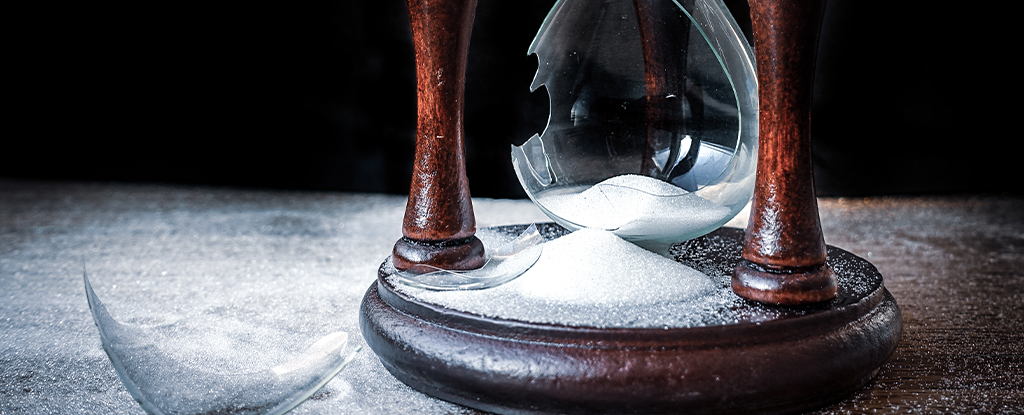Scientists Uncover Indications of Glass Exhibiting Reversible Time Characteristics
The relentless progression of time may not always be absolute, as demonstrated by a recent experiment conducted by researchers from the Technical University of Darmstadt in Germany and Roskilde University in Denmark. This investigation has revealed the existence of a reversible measure of time within certain materials.
In the realm of physics, time’s arrow holds little significance for many laws. By simply flipping an equation that describes the motion of an object, one can easily determine its initial position. These laws are referred to as time reversible.
However, while individual laws may defy the constraints of time, the destiny of our entire Universe is governed by the inexorable pull of chaos. In one direction, we have freshly laid eggs, and in the other, omelets. No amount of calculation can transform an omelet back into a pristine, unbroken egg.
From a scientific perspective, time can be considered a characteristic of the second law of thermodynamics, which states that isolated systems tend to become more disordered over time in a manner that cannot be easily reversed.
Determining whether a material system is time reversible or subject to the influence of entropy is a complex task. We can readily envision the rusting of an old car, the weathering of a statue, or the gradual decay of a ship stranded on a beach. However, materials like glass can undergo slow transformations that are unrelated to external corrosive forces.
Comprised of disordered arrangements of particles, non-crystalline substances such as polymers and amorphous solids like glass gradually settle into a theoretically stable state based on their own entropy-driven clock. This can be likened to a unique theory of relativity that is not based on gravity or acceleration, but rather on the systematic rearrangement of various molecules, which thermodynamically align themselves over time.

Physicists refer to this measure of aging as material time. Although the concept has been in existence since the early 1970s, its interpretation within the Tool-Narayanaswamy formalism has never been experimentally quantified.There is a valid explanation for this. The aging of glass occurs gradually in ways that cannot be easily observed by mere observation.
According to Till Böhmer, the lead author and a condensed matter physicist from the Technical University of Darmstadt, “It presented a significant experimental challenge.”
To overcome this challenge, the team ingeniously utilized a highly sensitive video camera to capture scattered laser light. When the laser light interacted with a glass sample, it created interference patterns that could be statistically analyzed as fluctuations, providing insights into the concept of material time within three different glass-forming substances.Rather than following a predetermined path towards equilibrium, the researchers discovered evidence of time reversibility at a molecular level. The fluctuations varied as particles interacted, pushing and pulling each other into new arrangements. If the entire process were rewound, it would be impossible to discern whether the movie was playing forward or in reverse.
“However, this does not imply that the aging of materials can be reversed,” clarifies Böhmer.
As a whole, the system is destined to reach a state determined by entropy.
Nevertheless, the minute oscillations of the molecular pendulums do not contribute to this process. They swing back and forth, seemingly oblivious to the passage of time that surrounds them.
This article is republished from sciencealert under a Creative Commons license. Read the original article.
Do not forget to share your opinion with us to provide you with the best posts !




0 Comments